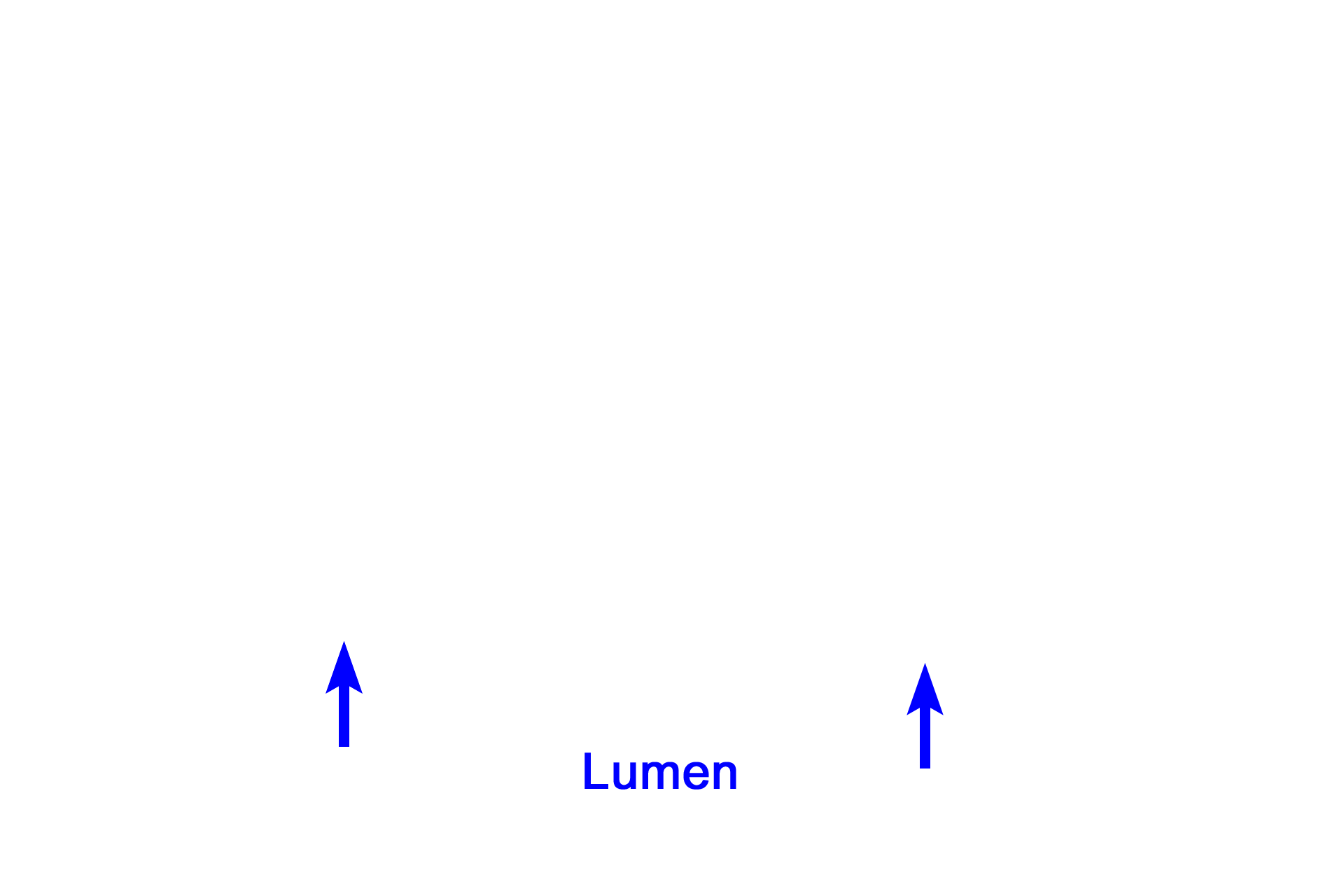
Hyaline cartilage
Hyaline cartilage is the most prevalent type, forming articular cartilages and the framework for parts of the nose, larynx, and trachea. This image shows a cross section of a cartilage ring that supports the trachea and maintains the openness (patency) of the airway. The lumen of the trachea is at the bottom. 100x

Hyaline cartilage >
Visible in this low magnification image of hyaline cartilage, are numerous cells embedded in the matrix. Many of the cells are in isogenous units. Hyaline cartilage undergoes regressive changes, a process that is visible in the center of the cartilage. Surrounding the cartilage, is a border of connective tissue called the perichondrium. This two-layered covering serves as protection for the cartilage and is a source of the chondroblasts that lie on the cartilage surface.

Perichondrium
Visible in this low magnification image of hyaline cartilage, are numerous cells embedded in the matrix. Many of the cells are in isogenous units. Hyaline cartilage undergoes regressive changes, a process that is visible in the center of the cartilage. Surrounding the cartilage, is a border of connective tissue called the perichondrium. This two-layered covering serves as protection for the cartilage and is a source of the chondroblasts that lie on the cartilage surface.

Epithelium >
As are all spaces in the body, the lumen of the trachea is lined by an epithelium that forms a distinct border facing the lumen. Loose connective tissue containing glands underlies the epithelium.

Connective tissue proper
As are all spaces in the body, the lumen of the trachea is lined by an epithelium that forms a distinct border facing the lumen. Loose connective tissue containing glands underlies the epithelium.

Next Image >
The next image is similar to that outlined by the rectangle.
